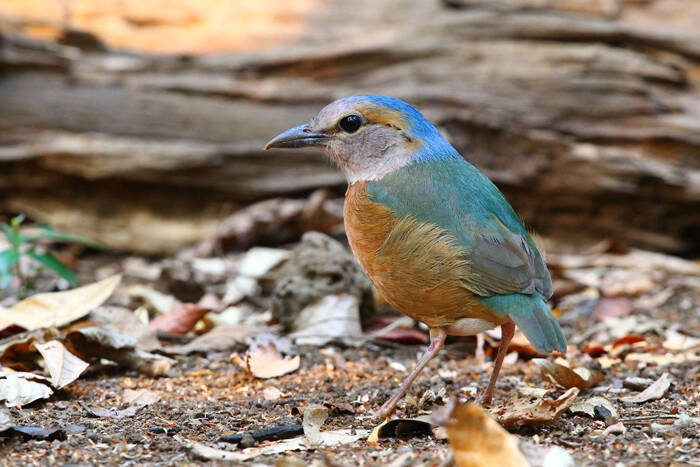Pitta soror
IUCN
LCBasic Information
Scientific classification
- name:Pitta soror
- Scientific Name:Pitta soror,Blue-rumped Pitta
- Outline:Songbird
- Family:Passeriformes Pittidae Pitt
Vital signs
- length:20-24cm
- Weight:91-135g
- lifetime:About 10 years
Feature
It is an olive and tawny pitta
Distribution and Habitat
Distributed in the Indochina Peninsula and the southeastern coastal areas of China, including Myanmar, Vietnam, Laos, Cambodia, Thailand, the southeastern coastal areas of China, Hong Kong, Yaoshan, Longzhou, Guangxi, Hekou, Yunnan, and Hainan.
The habitat includes subtropical or tropical moist lowland forests, subtropical or tropical dry forests, and subtropical or tropical moist mountain forests. They mostly live in tropical evergreen broad-leaved forests and move in the shade and wet places under the forest. The type locality of this species is Saigon, Vietnam.
Appearance
The plumage of the Blue-backed Pitta is very similar to that of the Blue-naped Pitta. The most obvious difference is that only the forehead is reddish brown, while the top of the head, back and shoulder feathers are all bright grass green, and are rendered yellowish brown, shining with a metallic luster. The lower back to the waist feathers are bright blue. The front of the eye and the area around the eye are rusty red, and the eyebrow is black. The throat is white, the chest is rendered pink, the flanks and abdomen are brown tea yellow, and the center of the abdomen is lighter. The surface of the tail feathers is darker green. The plumage of the female bird is similar to that of the male bird, but some individuals do not have pink rendering on the head and chest. The front of the eye and forehead of the Hainan subspecies are light pink-brown.
The iris is brown; the bill is yellow-brown or dark brown; the feet and claws are yellow-brown.
Details
Blue-rumped Pitta, also known as Blue-rumped Pitta, has 5 subspecies.

Blue-rumped Pitta usually hides in bushes and grasses, and when frightened, it flies a short distance along the ground to escape. The sound is subtle. It often digs up fallen leaves in the wet ground, frequently turning over the dead branches and leaves on the ground with its feet to find food. It feeds on insects of the Coleoptera family and the family of Curculionidae, larvae of the Lepidoptera, ants of the Hymenoptera, earthworms, termites, as well as seeds and fruits and other animal foods. The bird's song is a sharp "tew" and a long, rounded and falling "tiuu" sound.
The blue-backed pitta generally chooses to breed in the middle or near the end of the rainy season. Most of the nests are built in high-humidity forests, on mosses and ferns on very deep and steep gullies, rocky cliffs, and boulders in the forest area. The nest is like an assembled loose ball with an entrance left, mainly made of grass, tree roots, mosses and lichens. In areas dominated by bamboo, bamboo leaves account for a large proportion of the main building materials for building the nest. The shape of the bird's nest is like a round ball with a side door. They are located on nearby embankments. In other areas, nests are installed at different heights from the ground, from 2.50 meters to 4 meters. Each nest lays 4-5 eggs, up to 7 eggs. The color varies from light red, dark purple or white.
Listed in the 2012 Red List of Endangered Species of the World Conservation Union (IUCN) ver3.1-Least Concern (LC).
Listed in the second level of the List of Wild Animals under National Key Protection in China.
Protect wildlife and eliminate game.
Maintaining ecological balance is everyone's responsibility!








